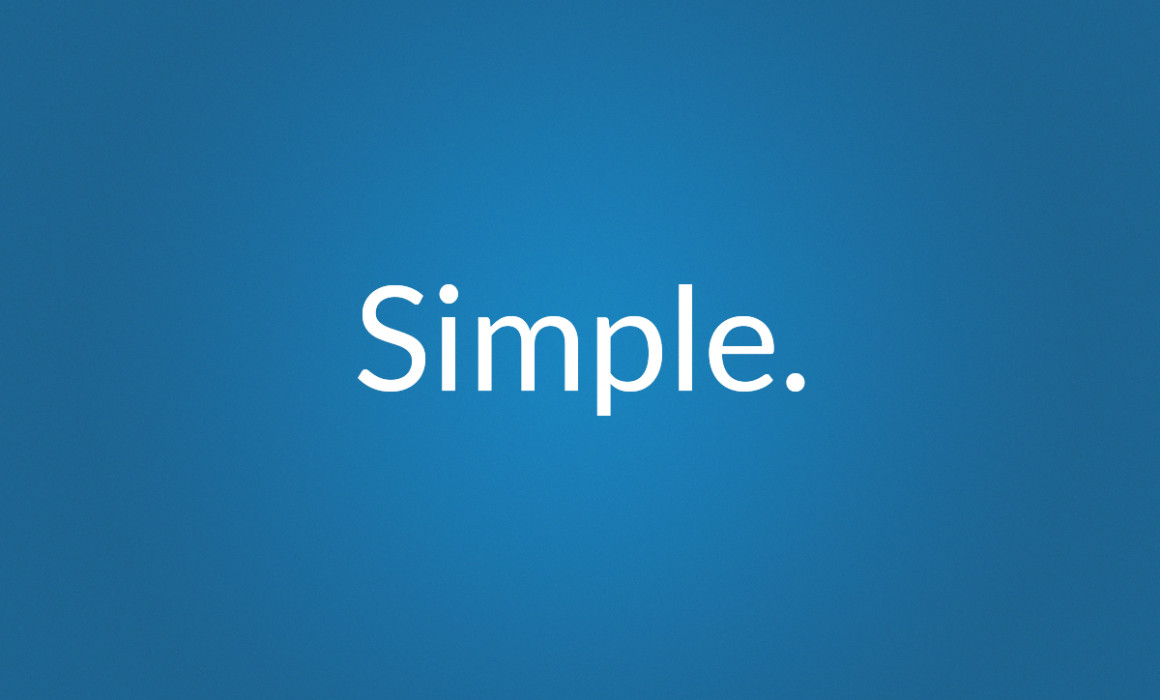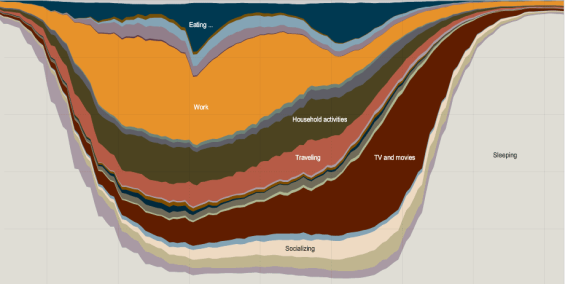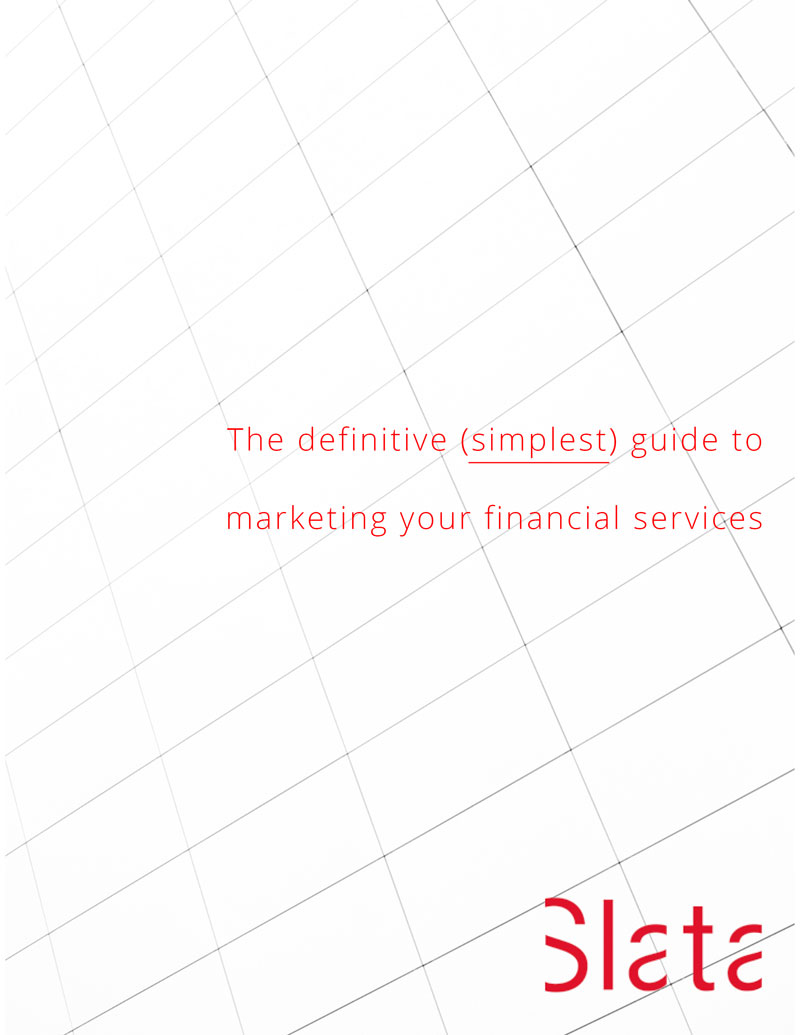The Simplicity Revolution in Banking
There are a million other things people would rather think about than banking. It is boring. It’s tedious. It’s complex. That’s why financial institutions need to build an innovation strategy completely around making banking easy and saving people time.
In the opening remarks delivered at the Forum 2015, Jeffry Pilcher, the CEO/President and Founder of The Financial Brand, showed nearly 1,000 attendees why they need to simplify banking, and what they can do to pull it off. Here’s the script from that speech.
Do you know what the most valuable commodity on earth is?
Spend a little time poking around on the internet, and you’ll find that people will pay crazy sums for all sorts of things. White truffles go for around $2,000 a pound. And some women have paid as much as $2,000 an ounce for a so-called age-defying miracle cream, Crème de la Mer. And bmbergris — which is basically whale poop — sells for $10,000 per pound. They use it in perfumes like Chanel No. 5… no joke. There’s also a fascinating little substance called tritium that’s used in self-illuminating “EXIT” signs that goes for $30,000 a gram — that’s $13.5 million per pound! Pablo Picasso’s painting “Women of Algiers” sold for an unbelievable $178 million, the most valuable piece of art on the planet.
But the most precious commodity on earth isn’t tritium, nor plutonium, nor Picasso paintings.
The most precious commodity on earth is your time. The basic principles of economics apply: Time is in extremely limited supply, and yet very high demand. There is only so much of it, and yet everyone wants more.
Think about it. The pace of life today is downright exhausting. Between your job, your kids, your friends, your family, your hobbies, you’ve got to mow the lawn, stop by the pharmacy, go to the dry cleaners, get a present for so-and-so’s birthday. You’re so busy, you don’t even have time to watch the TV shows you’ve packed onto your DVR!
That’s because everyone is starved for time!
A recent survey found that half of us feel we don’t have enough time in our daily lives. In fact, people are so stressed for time that we spend an average of an hour a day at work taking care of our personal business, things like banking.
Every day, we spend 8 hours sleeping, 8.5 hours at work, 45 minutes commuting, a couple hours eating and preparing food, 45 minutes on personal hygiene, and of course some time taking care of the house and the kids and the pets. And we spend an average of 2.5 hours a day watching TV.
So how much time does that leave the average consumer with every day? None. Well, almost none. In fact, we only have about 15 minutes of actual “free time” every day. And every day, there are over 3,000 companies scrambling to get our attention — 3,000 companies duking it out over what amounts to 15 measly minutes. Google and Amazon are billion dollar companies simply because they know how to get a sliver of those 15 minutes from us on a regular basis. Google and Amazon understand that time is so precious that they measure their performance in milliseconds!
Now this is one way you can be sure that time is indeed the most valuable commodity on earth. You see, the more valuable something is, the more precisely we measure it. Consider gold. The finest unit of measurement we use for gold is the “grain” — equivalent to what one grain of wheat weighs, or about 1/20th of a gram. It’s small, but it’s not that small. When it comes to measuring time, we are a lot more precise! The smallest unit we have for measuring time is the attosecond — one quintillionth of a second. For context, an attosecond is to a single second what a single second is to about 32 billion years. If you took a journey of 31 million miles — that’s roughly about the distance between Earth and Venus — an attosecond would be equivalent to the width of one human hair. That’s how precisely we measure time. There is nothing we measure more precisely than time.
The Crisis of Complexity
Our society in general – and banking in particular – is suffering from what branding firm Siegel+Gale has called a “crisis of complexity.”
30 years ago you had one television with five channels. Today you have five TVs in your house with over 500 channels. The Cheesecake Factory has over 241 different selections on their menu, and that’s not including the specials. Makeup retailer Sephora carries 233 different mascaras, 454 lotions and 367 different fragrances — that’s a lot.
If you buy a new pair of Sennheiser headphones, they will come with a 60-page manual! Why??? 60 pages??? How complicated can a pair of headphones possibly be? You plug one end in and put the other end on your head! If you can’t figure that much out, what’s a 60-page manual going to do but just confuse you further?!?
The reality is that the world just keeps getting more and more complex, and that includes banking. In a study of 13 different industries, banking actually ranked last in terms of simplicity. Even the U.S. Post Office scored higher for simplicity in this study than the highest ranked bank.
That’s because complexity has embedded itself into every aspect of our financial system — IT systems, products, even marketing and communications.
For instance, back in 1980, the typical credit card contract was about a page-and-a-half long. Today it is 31 pages.
Reality Check: 31 pages of disclosure is not simple. Listing 14 different checking accounts with 39 possible fees is not simple. Banking terminology is not simple — HELOCs, FDIC, EHL, 401K, NSF, ARMs, IRAs. In fact, nothing about banking is simple.
And now life has become so exceedingly complex that we have all completely run out of time. That’s why people want to think about banking as little as possible — because it’s tedious, it’s a hassle, it’s complex — and there are a million other things people would rather be doing with their time.
So if your financial institution is looking for an innovation strategy, you could lay out your innovation blueprint in about 8 words:
- Simplify banking.
- Solve people’s problems.
- Save people time.
It’s this simple! You aren’t innovating unless you are making banking easier and finding ways to save people time. “Innovation” and “simplicity” mean the same thing. And “simplicity,” in turn, is about saving people time. That’s why you should all be constantly asking yourselves this question:
“How can this be simpler?”
Step one is to identify the problem. Identify those pain points in everyday processes… and remove them.
It sounds simple enough, doesn’t it? But in reality, making banking easy ain’t easy. If it was easy, everyone would be doing it. For starters, you have to adopt a whole new organizational mindset. If you’re going to simplify banking, it requires a level of insight into the customer experience that allows you to really see what truly frustrates people, what irritates them, what pisses them off.
And this can be kinda hard for those of us who work in banking and understand its complexities and inner workings. We see banking differently than consumers do. To bankers, this is an exciting world of rates and risk, balancing issues like liquidity and capital reserves to maximize ROA.
But consumers don’t see banking anything like that. In fact, in the consumer’s world, it’s really rather simple. They either have money and they just need to figure out what to do with it, or they need money and just they need to know how to get it. All consumers are looking for is the shortest distance — the simplest path — between these two points:
- I’ve got money → Help me make the most of it.
- I need money → Help me get it.
That’s what simplicity means to consumers. Simplicity means fewer steps, fewer options. Less thinking, less time. More clarity, more intuitive, more usable. A consistent experience that isn’t frustrating, it’s frictionless.
Become Champions of Simplicity
As marketing leaders, you need to be the champions of simplicity in your organization. Everyone looks to you to set the tone for your brand. Well, here’s your chance to steer your strategy in a compelling direction, and differentiate your institution in real, meaningful and relevant ways.
As stewards of your organization’s simple strategy, you need to help everyone on your team stay focused on just one or two things. This is only way to avoid getting bogged down and trapped in the “Pit of Complexity.” And when you ultimately achieve this level of organizational focus and concentrate on just a few simple things, you’ll be shocked by how easy the strategic answers come — what you should do, what you shouldn’t do, what opportunities you should be saying “yes” to, and equally important what things you should be walking away from.
Now one of the neatest things about pursuing a strategy of simplicity is that everyone in your organization can actually do something about it. The entire staff can participate, they can all be involved. Every department can rally around a mission like this. It makes sense doesn’t it — to make life easier? Who can’t get behind that? Everyone can understand it, and simplicity can touch everyone and everything inside your organization.
What else can you do to make banking simple? You can start with this exercise. Make a list of everything you can think of about your organization, then classify everything on your list into two columns — what’s easy and simple on one side versus what’s hard and complex.
Look at your website. Could it be simpler? Probably, yes. Honestly, everything about your marketing communications could be simplified somehow — everything from your website down to your disclosures. The Pew Charitable Trusts has been working with banks around the world for a couple years now to simplify their checking account disclosures. They’ve helped dozens of banks and credit unions whittle their disclosures down from a hefty 20+ pages down to a single, one-sided sheet of paper.
Here are a few more ideas to make banking easier:
1. Use plain English. Let’s dump the legalese. Get rid of all that interplanetary mumbo jumbo. Keep it short. Fewer words. Shorter sentences. Fewer paragraphs. Less! “Less” is the language of simplicity — faster, fewer, frictionless, “as easy as 1-2-3.” What else can you do?
2. Chop out steps. What could possibly be easier than “1-2-3?” How about a one-step process?
3. Dedicate yourselves to minimalism. Beware of “feature creep.” The temptation when organizations innovate is to add, add — add features, add products, add functionality. But in a simple world, it’s the exact opposite. With every process, every product, and every marketing piece you produce, you need to be asking, “What can we remove?”
4. Communicate visually. They say a picture is worth a thousand words, so you need to build your look-and-feel around simple imagery. Take all the clutter and visual noise out of your brand identity. Your design style should reflect your commitment to minimalism and simplicity.
5. Rethink your marketing messages. You see, as financial marketers, we tend to think about banking services in terms of products and features — a credit card with a 9% interest rate and no fee, or a vehicle loan at 7%. What we’re doing is pushing the product and the rate, but that isn’t how consumers necessarily relate to it. For instance, take a 38-year old blue-collar dude who just wants to buy a motorcycle, and all he needs is a little money to do it. Is he looking for a home equity line or an unsecured signature loan? He doesn’t know. He doesn’t care. He has no idea. All he really cares about is whether he can afford the payment because he’s dreaming about hitting the open road. He isn’t thinking about APRs and net interest spreads. He just wants to buy a Harley, and he can afford about $450 per month.



